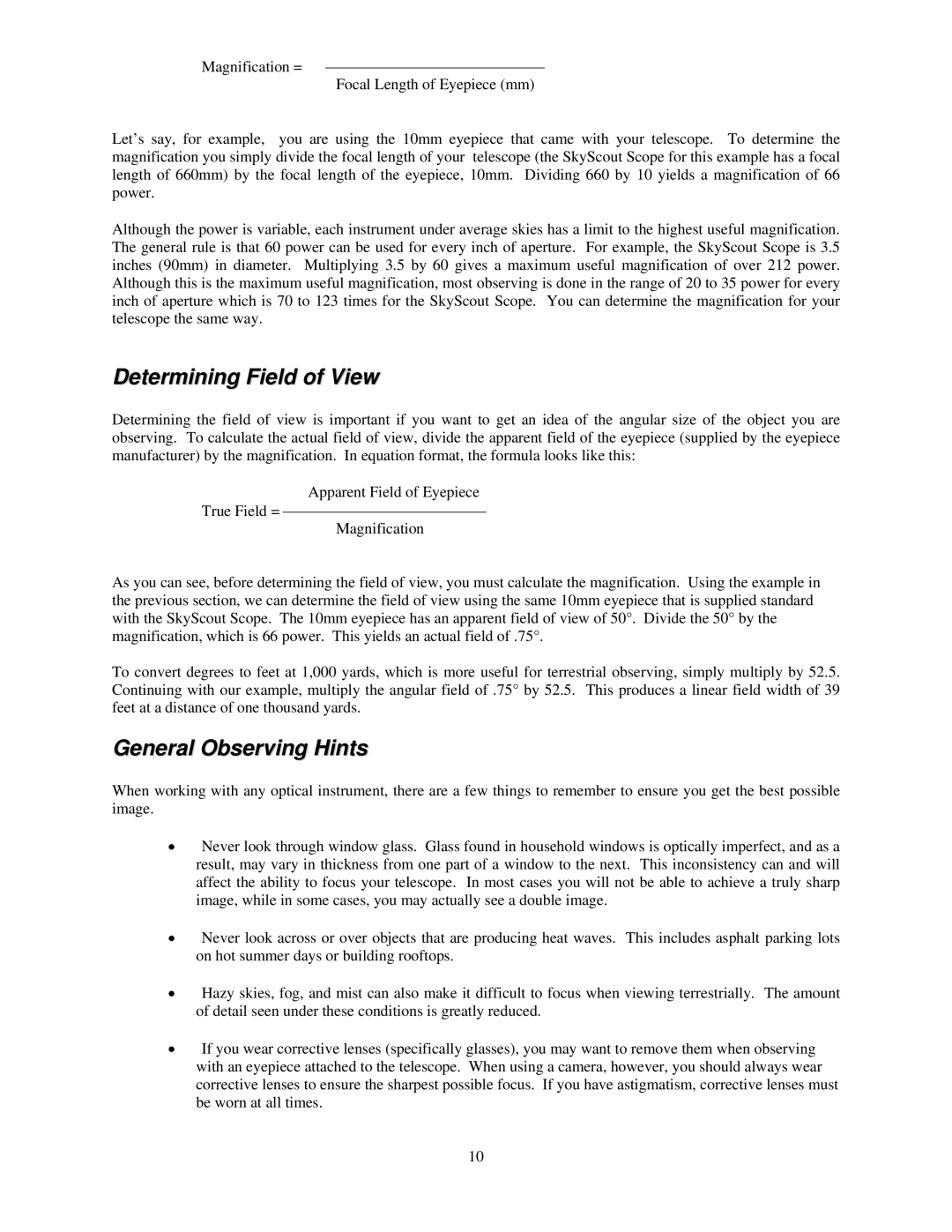Scope 90 specifications
The Celestron Scope 90 is a powerful refractor telescope that combines portability, performance, and user-friendly features, making it an excellent choice for both novice and experienced astronomers. This telescope is designed to provide impressive views of celestial objects, from the craters of the Moon to distant planets and star clusters.One of the standout features of the Celestron Scope 90 is its 90mm aperture, which allows for significant light-gathering capacity. This means that users can enjoy brighter and clearer images of various astronomical phenomena. The telescope employs high-quality optics with fully coated glass lenses that enhance image contrast and clarity, ensuring a pleasurable viewing experience.
Another notable characteristic of the Celestron Scope 90 is its compact and lightweight design. Weighing in at just a few pounds, it is easily portable, making it ideal for stargazing on the go or for backyard observing. The included adjustable aluminum tripod offers stability without adding excessive weight, contributing to the telescope’s ease of transport.
The telescope features a simple yet effective altazimuth mount, making it straightforward to point at objects in the sky. The mount allows for smooth movement in both horizontal and vertical directions, giving users the freedom to track celestial objects with ease. Additionally, Celestron includes a StarPointer finderscope that helps users locate their desired targets quickly and efficiently.
Furthermore, the Celestron Scope 90 is equipped with two eyepieces, offering different magnification levels to enhance viewing versatility. This allows users to switch between low and high magnification for various astronomical objects. Whether observing the rings of Saturn or the details of a distant galaxy, the Celestron Scope 90 provides a rich viewing experience.
Celestron has also integrated advanced technologies into the Scope 90, including a robust build quality that enhances durability. The telescope's design is made to endure various weather conditions, making it suitable for field use. It's also compatible with optional accessories, such as solar filters and additional eyepieces, allowing users to expand their astronomical observations.
In summary, the Celestron Scope 90 stands out as a compact, powerful, and user-friendly telescope. With its impressive optics, portability, and advanced features, it caters to a wide range of astronomical interests, making it a reliable companion for anyone eager to explore the wonders of the night sky. Whether you're just starting your stargazing journey or are an experienced astronomer, this telescope offers the capabilities you need for an enjoyable and rewarding experience.
